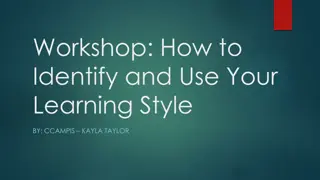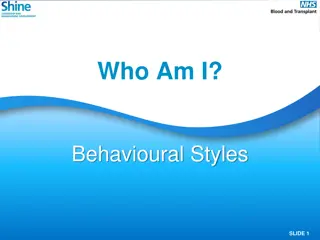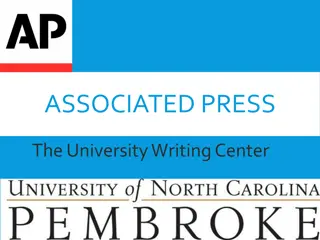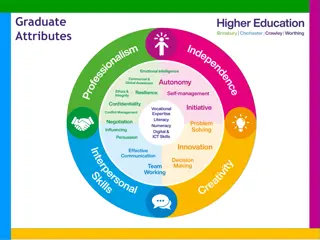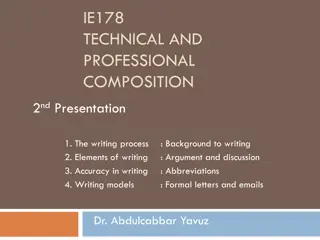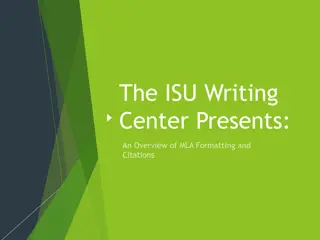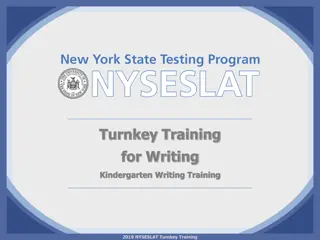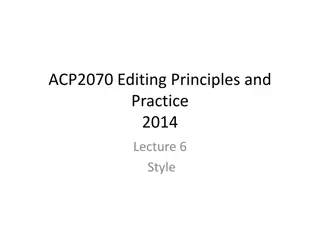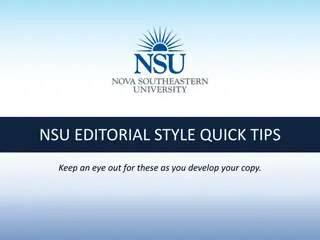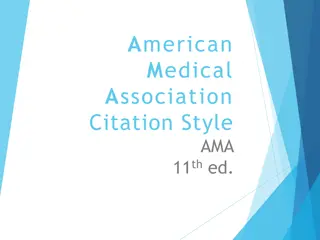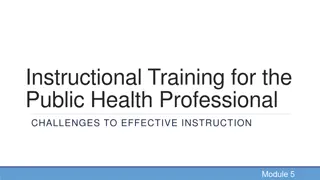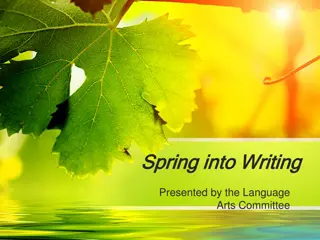Writing Process Through "The Elements of Style
Exploring the principles of effective writing as outlined in "The Elements of Style" by William Strunk and E.B. White. The text emphasizes the importance of clear and assertive language, coherent structure, and the connection between writing, thinking, and reading. It delves into different forms of writing and provides practical exercises to hone writing skills.
Download Presentation

Please find below an Image/Link to download the presentation.
The content on the website is provided AS IS for your information and personal use only. It may not be sold, licensed, or shared on other websites without obtaining consent from the author.If you encounter any issues during the download, it is possible that the publisher has removed the file from their server.
You are allowed to download the files provided on this website for personal or commercial use, subject to the condition that they are used lawfully. All files are the property of their respective owners.
The content on the website is provided AS IS for your information and personal use only. It may not be sold, licensed, or shared on other websites without obtaining consent from the author.
E N D
Presentation Transcript
The Elements of Style, The Elements of Style, William Strunk and E.B. White (1959 William Strunk and E.B. White (1959) It is an old observation that the best writers sometimes disregard the rules of rhetoric. When they do so, however, the reader will usually find in the sentence some compensating merit, attained at the cost of the violation. Unless he is certain of doing as well, he will probably do best to follow the rules. After he has learned, by their guidance, to write plain English adequate for everyday uses, let him look, for the secrets of style, to the study of the masters of literature.
0 Make definite assertions. Avoid tame, colorless, hesitating, non- committal language. 0 Keep related words together. 0 In summaries, keep to one tense. 0 avoid a succession of loose sentences These are good rules. So what s the problem?
0 Assumes a perfect paper that is out there, rather than building from the ground up 0 Starts too late in the process 0 Doesn t see writing as a form of thinking 0 Doesn t see writing as a form of reading
Writing as Thinking Writing as Thinking Different kinds of writing reflections, blog postings, LATTE postings, paper proposals, research questions, minutes of class discussions in addition to more traditional essay assignments Not all writing is graded Comments focused on how successfully a piece of writing expresses author s thinking (argument + motive, flow, the work each part of the paper is doing)
Sample writing as thinking exercise Sample writing as thinking exercise [given as part of a research paper assignment, after a preliminary proposal or bibliography is submitted and returned with grades and comments] o Break into pairs o Jot down a one paragraph description of your paper (as you have it developed so far) - include, if you have it, what question you hope to answer, what your argument is, what the motive is, what your evidence is. Don t worry if you don t yet have some parts of these. Note that down as well. o Read it aloud to your partner. Your partner will ask questions/make suggestions about each part (question, argument, motive, evidence). o Take notes on your conversation o switch
Writing as Reading Writing as Reading 0 Make a habit of noting and evaluating the way authors put together arguments and motives, and other more and less successful choices they make in their writing. 0 Once or twice a semester, use the grading rubric used for a given assignment to evaluate a reading selection from the course. 0 Give out grading rubric in advance, have them use it on their drafts. 0 Change second short paper assignment to rewrite, without warning
Sample writing as reading exercise Sample writing as reading exercise oread pages xiii-xvi from The Botany of Desire (handout) oWhat are the argument and motive of the book, based on this excerpt? How persuasive and compelling do they seem? oWhat evidence will he be using? oHow is the section structured? How do the sequencing of the argument and transitions between points work? oHow is the writing at the level of the sentence and paragraph? Are there sentences and/or paragraphs that are particularly strong or weak? In what way?



